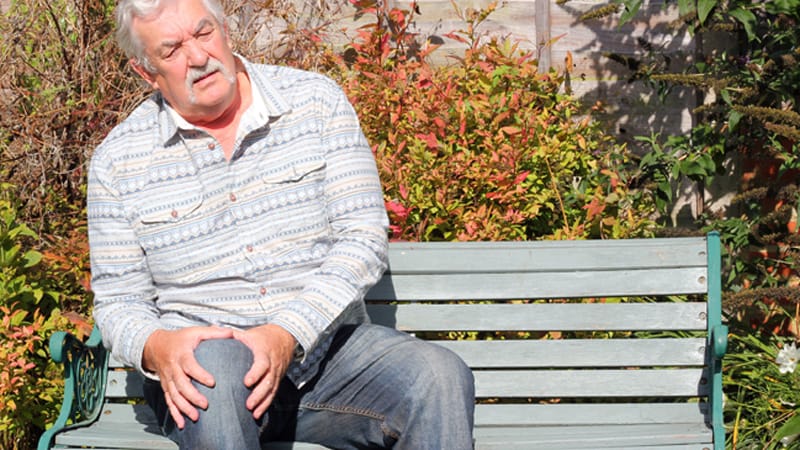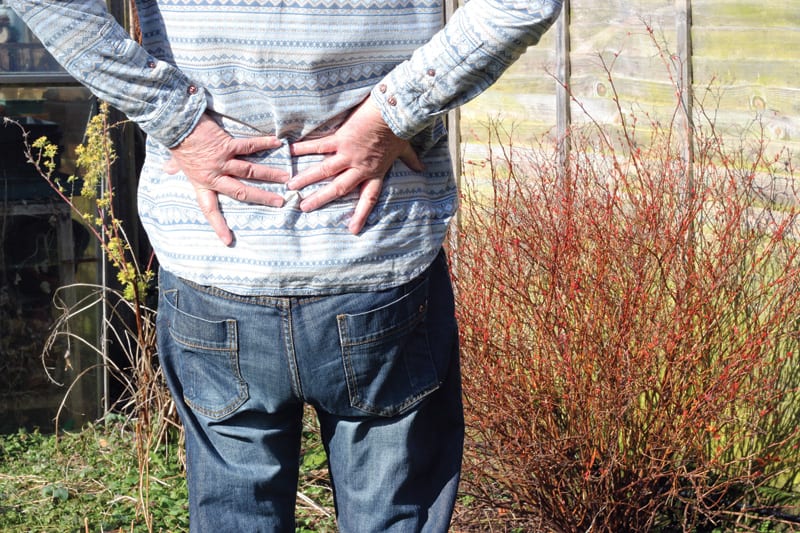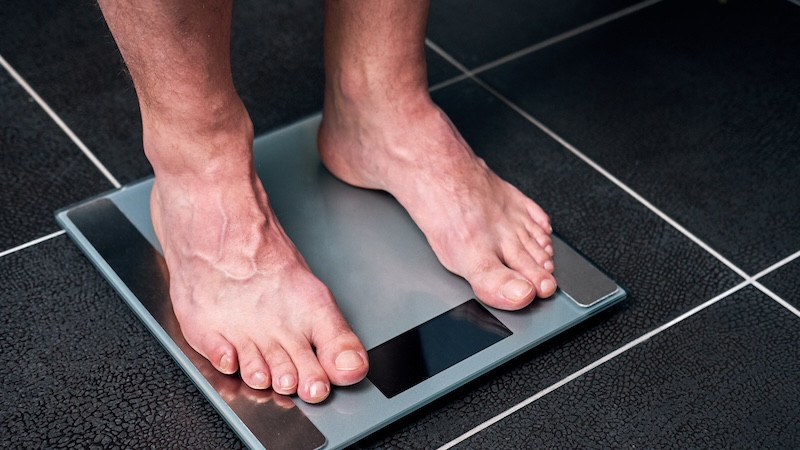A Powerful Prescription for Arthritis
Proven benefits of diet and exercise

When Michelle Balcombe was diagnosed with rheumatoid arthritis 15 years ago, she walked with her back at a right angle to the floor every morning. She didn’t want to take medication because of the damaging side effects, so her doctor recommended that she join a gym and start exercising.
Balcombe, now an internationally competitive body builder, hired a personal trainer at American Family Fitness and began doing basic stretching and floor exercises to improve her overall strength and flexibility. After four years, she progressed to weight training.
She also changed her diet to organic foods and minimized sugar, salt and alcohol. She drinks a gallon of water every day to flush toxins from her body. Although she has occasional flare-ups, she says she feels “fantastic.”
According to Marcy Moss, senior director of consumer health for the Arthritis Foundation, exercise is now a key recommendation for all types of arthritis. Stretching and moving joints keeps them flexible and strong, and strengthening muscles around joints helps support them, reduces pain and improves functioning, she said. “Staying still increases stiffness.”
According to the Arthritis Foundation, more than 50 million adults (one in five) and 300,000 children in America have arthritis. It is the leading cause of disability and occurs more frequently as people age.
THERAPEUTIC TREATMENTS
People who are experiencing a lot of pain and stiffness may initially be referred by their doctors to physical therapy. Therapists guide patients through exercises designed to strengthen the muscles around arthritic joints and increase flexibility, range of motion and endurance, according to Jennifer Masters, central Virginia market manager for Select Physical Therapy.
Masters said some patients begin their therapy in Select Physical Therapy’s heated therapeutic pool at Swim RVA in Chesterfield County. The heated pool is handicapped accessible and equipped with a lift chair, underwater treadmills, resistance jets and underwater cameras.
She explained that the buoyancy of the pool limits pressure on the joints and allows muscles to relax for improved flexibility and mobility. “It’s ideal for people who have had hip or knee replacements, people who are at risk of falling and people who have chronic pain.” Patients progress to land exercises and then graduate to a home program.
She recalled numerous patients with arthritis who resumed their normal activities and returned to activities such as tennis and walking. “Not only do they get back, but they function at an even higher level than before,” she said.
LOCAL FITNESS OPTIONS
Beyond physical therapy, there are several fitness programs in the Richmond area designed specifically for people with arthritis.
Project Yoga Richmond (PYR) offers Yoga for Arthritis, a national program developed and tested at the Johns Hopkins Arthritis Center that has proven to be helpful for people with osteoarthritis as well as rheumatoid arthritis, according to Nitika Achalam who teaches the program here.
Available to people of all ages, backgrounds and body types, the eight-week program includes a 1½-hour class once a week. The class is a blend of many styles of yoga modified for people with arthritis. Chairs, sandbags, blocks and bolsters are used to help participants get in and out of poses. Gentle movements help improve balance, stability and weight bearing. Breathing, visualization, meditation and deep relaxation help decrease stress and pain. Participants also receive a manual and are encouraged to practice at home.
“People find relief by taking the class. They talk about how good they feel,” Achalam said. Some people who have taken the class couldn’t get up and down from the floor to play with their grandchildren; others couldn’t tie their shoes. By the end of the class they were able to do those things, she said.
Private and group classes are available. People pay what they can, she said, noting that PYR is a nonprofit organization.
At American Family Fitness in Colonial Heights, arthritis classes are offered in a heated pool. Balcombe, who is a personal trainer there, said the classes include gentle, slow movements that improve range of motion and muscle strength and provide cardio activity. Other classes taught in the pool that are helpful for arthritis include tai chi and Yoqua (yoga in the water), she said.
Aquatic classes helpful for arthritis are also offered at various other fitness locations throughout the Richmond area.
If you can’t afford a gym, walk around your neighborhood or the mall or inside your house, Balcombe said. “The important thing is to get your body moving and change your diet.”
To help people get moving, the Arthritis Foundation offers Walk with Ease, a six-week program to help people ease into a walking routine. The program has proven to be effective at reducing pain and improving balance, strength, pace and walking ability. It also improves overall health and confidence in one’s ability to be active, Moss said.
Mobile apps and a book with instructions for a self-guided program can be ordered from Arthritis.org. Guided group programs are also offered at various locations by the National Park Service, the Center for Disease Control and other organizations.
EATING TO MANAGE ARTHRITIS
Diet is also important. According to Moss, the Arthritis Foundation recommends maintaining a healthy weight. Excess weight creates pain and pressure on the lower body. “Losing a little weight makes a big difference: losing one pound relieves four pounds of pressure on your knees,” she said.
Eating a heart-healthy diet with lots of vegetables and fruits, as with the Mediterranean Diet, reduces inflammation and helps with weight loss, she said. Key beneficial foods include fish with omega-3 fatty acids, nuts and seeds, fruits and vegetables, beans, olive oil and whole grains.
She noted that avoiding gluten and nightshade vegetables such as tomatoes, onions, and peppers, may or may not be helpful. It varies with individuals, she said.
Having a positive attitude also matters, according to Edward Ishac, professor of pharmacology and toxicology at Virginia Commonwealth University. Since he was diagnosed with rheumatoid arthritis 50 years ago, he has had four hip replacements. He maintains a healthy lifestyle and manages his arthritis with medication. He also leads a local spondylitis support group.
“It’s a battle. You can let it beat you or you can fight it,” Ishac said. “I look at what I can do, not what I can’t do.”
WHAT IS ARTHRITIS?
According to the Arthritis Foundation, the term “arthritis” is an informal reference to joint pain or disease. There are actually more than 100 types of arthritis that fall into four main categories: degenerative, inflammatory, infectious and metabolic. Symptoms commonly include joint pain, swelling, stiffness and decreased range of motion.
Osteoarthritis, a form of degenerative arthritis, is the most common type. It occurs when the cartilage that cushions the ends of bones wears thin and bone rubs against bone.
Rheumatoid arthritis and psoriatic arthritis are types of inflammatory arthritis, autoimmune diseases that occur when the immune system attacks and erodes joints with inflammation that may also damage other parts of the body.
Infectious arthritis occurs when a bacterium, virus or fungus, such as food poisoning, sexually transmitted diseases or hepatitis C, enters the joint and causes inflammation. It is often resolved with antibiotics but may become chronic.
Metabolic arthritis is caused when high levels of uric acid form needle-like crystals in the joint, causing extreme pain, known as a gout attack. If uric acid levels are not lowered, it can become chronic.
Based in Hanover County, Paula Neely writes frequently for Boomer Magazine.


